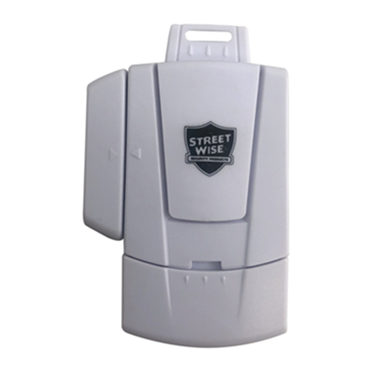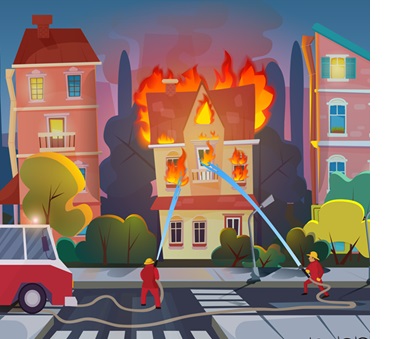How to Identify a Potential Workplace Mass Shooter
 Workplace violence, including mass shootings, is a tragic and devastating phenomenon that unfortunately continues to occur. According to the FBI, there were 61 active shooter incidents in the United States in 2021, resulting in 103 deaths and 140 injuries. It is essential for employers and employees to be aware of potential warning signs and take appropriate measures to prevent violence in the workplace.
Workplace violence, including mass shootings, is a tragic and devastating phenomenon that unfortunately continues to occur. According to the FBI, there were 61 active shooter incidents in the United States in 2021, resulting in 103 deaths and 140 injuries. It is essential for employers and employees to be aware of potential warning signs and take appropriate measures to prevent violence in the workplace.
Identifying a potential coworker who could become a workplace mass shooter can be a challenging task, as there is no definitive profile of an individual who may commit such an act. However, there are certain behaviors and warning signs that should not be ignored. In this blog post, we will discuss some of the red flags that employers and employees should look out for.
- History of Violence
A history of violence is one of the most significant indicators that an individual may become violent in the future. It is important to note that this history does not necessarily need to be related to the workplace. An individual who has a history of domestic violence, for example, may be at a higher risk of committing workplace violence.;
- Substance Abuse
Substance abuse, particularly of drugs or alcohol, can also be a risk factor for workplace violence. Drugs and alcohol can impair judgment and increase aggression, which may lead to violent behavior. An individual who has a history of substance abuse or who displays signs of addiction, such as withdrawal symptoms, may be at a higher risk of becoming violent in the workplace.
- Mental Health Issues
Mental health issues, such as depression, anxiety, and bipolar disorder, can also increase the risk of workplace violence. It is important to note, however, that not all individuals with mental health issues will become violent. It is essential to approach mental health issues with empathy and to offer support and resources to individuals who may be struggling.
- Social Isolation
Individuals who are socially isolated and have few or no close relationships may also be at a higher risk of workplace violence. Social isolation can lead to feelings of anger, frustration, and desperation, which may culminate in violent behavior. Employers should encourage employees to build relationships and foster a sense of community in the workplace.
- Unusual Behavior
Unusual behavior, such as extreme mood swings, paranoia, or aggression, may also be a warning sign of potential violence in the workplace. If an individual displays behavior that is significantly different from their usual demeanor, it may be worth investigating further.
- Obsession with Weapons
An obsession with weapons or violent media can also be a red flag. Individuals who collect weapons or express an unusual interest in firearms may be at a higher risk of committing workplace violence. Employers should be aware of any unusual behavior related to weapons and take appropriate action if necessary.
- Issues with Authority
Individuals who have a history of conflicts with authority, such as previous terminations, may also be at a higher risk of workplace violence. Employees who express a desire for revenge or display hostility towards their employer or supervisor should be taken seriously and addressed promptly.
- Expression of Violent Ideology
Individuals who express a violent ideology, such as support for terrorism or extremist groups, may also be at a higher risk of committing workplace violence. Employers should be aware of any extremist views expressed by employees and take appropriate action to prevent violence in the workplace.
It is important to note that these warning signs do not necessarily indicate that an individual will become a workplace mass shooter. However, they should be taken seriously and addressed promptly to prevent potential violence in the workplace. Employers and employees should be aware of these warning signs and take appropriate measures to prevent workplace violence.
Employers can take several steps to prevent workplace violence, including conducting background checks on potential employees, creating a workplace violence prevention program, and providing resources and support to employees who are struggling with mental health or personal issues. Employees can also play a critical role in preventing workplace violence by reporting any concerning behavior to their employer or HR representative.
If you are concerned about a coworker's behavior, it is important to report it to your employer or HR representative as soon as possible. Your employer should have a workplace violence prevention program in place and can take appropriate action to address any concerns. Reporting concerning behavior can also help prevent violence in the workplace and potentially save lives.
In addition to reporting concerning behavior, employees can also take steps to protect themselves in the event of a workplace violence incident. The Department of Homeland Security recommends the following actions in the event of an active shooter:
-
Run: If it is safe to do so, leave the area immediately. Encourage others to come with you, but do not wait for them.
-
Hide: If you are unable to leave the area, find a place to hide. Lock or barricade doors and turn off the lights. Silence your phone and stay quiet.
-
Fight: If you are unable to run or hide, be prepared to fight back. Use any available objects as weapons and do everything you can to incapacitate the shooter. (See "7 Crucial Steps to Survive a Mass Shooting" for additional steps you can take.)
It is important to remember that workplace violence prevention is everyone's responsibility. By being aware of potential warning signs and taking appropriate action, employers and employees can work together to prevent violence in the workplace.
In conclusion, identifying a potential coworker who could become a workplace mass shooter is a challenging task, but there are certain behaviors and warning signs that should not be ignored. A history of violence, substance abuse, mental health issues, social isolation, unusual behavior, obsession with weapons, issues with authority, and expression of violent ideology are all potential red flags. Employers and employees should be aware of these warning signs and take appropriate measures to prevent workplace violence. Reporting concerning behavior and being prepared to respond in the event of an active shooter can also help prevent violence in the workplace. Workplace violence prevention is everyone's responsibility, and by working together, we can help create a safer and more secure workplace for all.



























